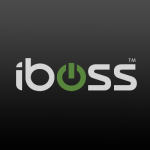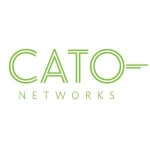What is our primary use case?
If there's any data that is taken out from their corporate applications, on their managed devices, and being taken out and stored somewhere else, on an application that is not managed, they don't have visibility on that.
Therefore, with Cloud App Security, the main use case is to identify information about applications that are way beyond their boundaries and to understand what people are accessing them as well as if those applications are safe or not. It's a Shadow IT discovery solution.
Apart from that, it's a solution used to protect corporate data from being taken out of those applications and being shared externally with people who are not meant to have those documents or data. It's a solution designed to prevent exfiltration and data filtration of corporate data from those applications to unknown people that may happen without proper visibility.
Basically, it's used for two purposes: providing control of the data that is in cloud applications, and shadow IT discovery. That's the major purpose of Cloud App Security.
What is most valuable?
This solution acts as an identity and posture management assessment solution also. When you have your on-prem AD integrated with Defender for Identity, it can understand your identity posture.
It can understand things like your Active Directory spread or the current state of your Active Directory on certain recommended practices. For example, if users in your organization are not using secure log-in methods. If their LDAP authentication is not secure, you'll get that information. That's identity and posture management. For your on-prem AD, if you have the solution deployed, which is Defender for Identity, it'll give you an understanding of your identity state, of your on-prem AD state, and give you recommendations accordingly, on what needs to be changed and managed, to make sure that you're secure.
Apart from that, it also integrates with third-party solutions and services. For example, in an organization with multiple cloud applications. Typically, you don't have visibility over user activities or logs. You don't have control over the data. If a user logs in from one location and then the user logs into that application from another location, you don't have the visibility as you don't have ML and AI capabilities inbuilt. With this solution, once it integrates with those applications, it has inbuilt default functionality of ML and automation. It is able to understand the user's behavior and identify inconsistencies in user accounts, for those applications, and can give you suggestions or raise alerts.
The solution does not affect a user's workflow. It is not a user-specific solution. Users would not see the change in their usual behavior and their usual activities as such. The user does not really know what's happening in the background. The Cloud App Security is a solution for your whole organization, to make sure that you're monitoring the right activities - for example, those activities that are really uncommon - or specific activities that you want to monitor. The company has the ability to create Cloud App Security policies for sets of users, however, the users themselves do not see or feel the impact.
An IT administrator manages the solution and it gives them a lot of information. They can see a lot of detail around how other users interact with data and applications across the company, and if anything unusual happens.
What needs improvement?
The integration with macOS operating systems needs to be better. The Cloud App Security integrates with Windows Defender for Endpoint, which is able to monitor the traffic from Windows 10 operating systems. When it integrates with Defender for Endpoints, the macOS capability does not let you directly see the shadow IT discovery. You have to be in your network, to be able to see if any activity from a macOS operating system is happening. If you're working from home without a VPN connection nowadays, which is the usual case for a remote workplace, you can't really monitor or track the activities in the shadow IT that users are using offsite on macOS operating systems.
The Cloud App Security integration with external DLP solutions is not so seamless. There are solutions that you can integrate with Cloud App Security as an external DLP solution, however, it's not so seamless that you can have the integration with the endpoint. It's there, yet, it's not so seamless and integrable.
For how long have I used the solution?
I've been using the solution for the past five years.
What do I think about the stability of the solution?
It's been stable for the past little while. The improvement has been immense, however, overall, it's a stable solution. It has not changed so much. Of course, the implementation of feature sets and improvements have happened, although they're almost similar. I would say it's a stable solution in general.
What do I think about the scalability of the solution?
An average organization would almost utilize 100 to over 150 applications. They wouldn't really have an understanding of what activities are happening across those corporate applications. You can integrate N number of applications. There are approximately 16,000 plus applications that you can monitor and integrate with Cloud App Security. Then, based on those applications, you can understand the users' behavior.
The benefit you get is that you are able to monitor all your applications and control the data that goes out of those applications. You can also control any sort of activity, which you feel should not be happening on that application. The user can be prevented from doing certain activities. Cloud App Security helps you do that across as many apps as you want.
In terms of users. the default Cloud App Security is just a license-based solution. As long as you have users in your organization, you just buy licenses from Microsoft and assign those licenses to your user accounts. It's very scalable.
There are a few parts to it. For example, shadow IT discovery, which is an added feature that allows you to be able to implement additional users in your organization. The Cloud App Security will also require additional infrastructure. Let's say if the data set that Cloud App Security is absorbing at a particular time span, if it increases, then you probably have to implement additional on-prem resources or cloud resources for it to be able to track all of the network data.
Depending on the data set that you're ingesting in Cloud App Security, you might have to increase your workload on-prem. Other than that, Cloud App Security itself is a very scalable solution.
When it comes to the size of organizations I've worked with, I should note I am personally a Microsoft consultant only. I work on Microsoft projects and with Microsoft's clients only. I've worked with organizations with 15,000 users and an organization that has approximately 6,000 users. I've worked with organizations that have 500 users. The size of the company varies.
How are customer service and support?
Microsoft has different support tiers. If it's Pro support I would rate it at a seven or seven-and-a-half at a maximum. There are Premier support services and there are Professional supports, another type of support service. Premier support service is very good. I would rate that at an eight-and-a-half or nine.
Pro support is if you buy a basic license for an organization. It's not so great and yet still good. For Pro support, you usually do not get routed to Microsoft people. Those are generally people who are third-party support service providers.
The problem is, specifically in India, it's also specific to locations, as sometimes if you're working in a different location, you get different support. As I mentioned, it's third-party support usually that you get with Cloud App Security or any Microsoft solution Pro support.
The level of knowledge you get is totally dependent on how the organization and how the third-party service provider is. Usually, there are time delays. Sometimes their initial response will happen, and then they will take time in responding back and/or aligning a resource. Sometimes that resource is not technically advanced or technically skilled and can't fully understand the problems at hand. In that case, they require escalating most of those cases to the technical consultants. If it's a typical question, a typical scenario, I would say it's good. Cloud App Security is a beast of a product, so the major issue is with the Pro support.
If it would have been directly with Microsoft, this help has been really good, however, it's a third-party service provider who's helping you out, and they just don't have the insights an actual Microsoft user has.
Which solution did I use previously and why did I switch?
I don't have any experience working with a third party or a competitor of Cloud App Security, however, I know there is one called McAfee, which is supposed to be equally good.
McAfee offers a cloud app security service that is very, very good and close to what Microsoft offers. That is what I understand from customers and the discussions I've had surrounding it, though I have not really worked on McAfee. What I understand from customers is, Cloud App Security, the integration, the capabilities that it has to offer, are much more advanced. For example, Microsoft's identity posture assessment. There is no solution in Europe, anywhere, which offers such a capability. It's an integrated solution with Defender for Identity, however, it's a service that Cloud App Security at least offers, which otherwise would not be available.
Similarly, integration with the number of applications, as I mentioned, is great with Microsoft. The capability for you to monitor and route your traffic for all of these different applications, and to be able to analyze the traffic from those corporate applications is important.
The reverse proxy capability that Microsoft Cloud App Security offers is really good. It lets you track anything in real-time, and monitor all those things, which is not possible using other solutions.
How was the initial setup?
The initial onboarding of Cloud App Security with Office 365 is pretty straightforward. For an organization that does not use Office 365 as its primary SaaS application, you will still have to follow a few steps, however, those are also straightforward steps.
In general, I would say, Cloud App Security implementation, within the initial adoption of an application, is very seamless.
The time it takes to deploy depends on the use cases. If you're talking about a simple activation of Cloud App Security, and enabling and monitoring the activities of certain basic applications, it shouldn't take more than a few hours for integration. If there are more complex situations, more complex scenarios, depending on what the scenarios are, then there may be a little bit more effort and time required. Other than that, if the default integration with applications is already there, it should not take more than a few hours to have it up and running.
What's my experience with pricing, setup cost, and licensing?
I've worked with almost eight to 10 customers using Cloud App Security. This is Microsoft Cloud App Security. Cloud App Security has two offerings. One is Office 365 Cloud App Security, which is a basic cloud app security. Then there is Advanced Cloud App Security which is called Microsoft Cloud App Security.
The Office 365 one, the one which you get with E5 licenses, it'll give you basic Office 365 monitoring and snapshot reports, but not a whole lot of capabilities.
That said, I don't have any information about the actual costs of the license themselves.
What other advice do I have?
I deploy this solution. I don't utilize this solution as a solution for my organization, and instead, deploy this solution for clients. I'm a consultant for this product. My company is a Microsoft partner.
This is a SaaS application.
I would advise new users to first try to identify the applications which are corporate-owned applications, be it if it's an on-prem application or if it's a cloud application. Once you identify all those applications which you're using in your organizations as a whole, you should try to integrate all those applications with Cloud App Security.
Once you've started integrating and planning ahead what applications are needed to be monitored first, start integrating those applications and monitoring them. Slowly, integration after integration, all the monitoring will start happening.
Once the integration for those applications has happened, you should go ahead and start implementing what kind of policies you want. If you want activity monitoring policies, then you should start creating those activity monitoring policies. Let's say you want to apply DLP policies for third-party applications. You will need to reach out to those different teams who'll be able to give you better answers as to how to approach the data that is being shared or being uploaded from those applications to any other applications.
Based on that, create those policies in Cloud App Security. The correct and the right approach is to use the network appliances that you have in your organization. Once you have identified that information, you can go ahead and start implementing the Cloud App Security and start integrating those network appliances and those applications with Cloud App Security.
Overall, I would rate the solution at an eight out of ten.
Disclosure: My company has a business relationship with this vendor other than being a customer: Partner




















